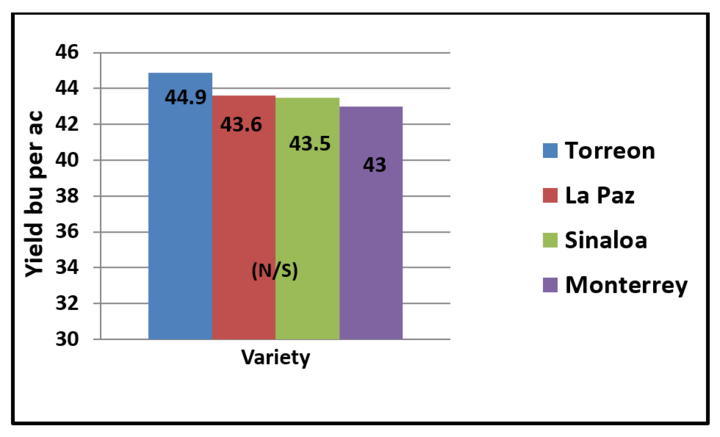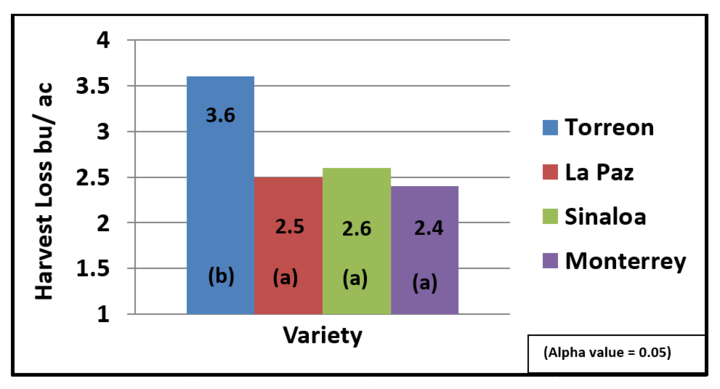In recent years more growers in the Central High Plains have been transitioning to a direct harvest system for producing and harvesting dry edible beans. With direct harvest growers make one pass of the combine rather than the more conventinoal method of undercutting/windrowing and then combining. Successful direct harvesting starts at seeding with selection of a well-suited upright variety and planting on a level field surface and continues with other best management practices throughout the year, leading up to harvest.
Other growing regions such as North Dakota, Michigan, and Canada use direct harvest for most of their dry bean harvest. Now, in the Nebraska Panhandle, more than 20% of dry beans are direct harvested. In about half these fields, a crop desiccant herbicide is applied pre-harvest.
Advantages to direct harvest include
- fewer harvest operations,
- less vulnerability to wind and moisture events because the beans are not placed in windrows,
- little soil disturbance leaving more residue on the field, and
- if harvested correctly, less soil moving through the combine.
Disadvantages to direct harvest include
- a later harvest date,
- higher potential harvest loss,
- need for a proper flex header,
- a need to learn a new system, and
- fewer bean varieties to choose from for planting as prostrate varieties are not suitable for direct harvest.
Harvest loss is often the major concern with direct harvest of dry beans. Using the conventional harvest method, an average of about 1.5 bushels per acre total harvest loss can be expected in good conditions. This is based on research conducted on 24 farms in a two-year study by the University of Nebraska Panhandle Research and Extension Center (PREC). If conditions are poor with significant wind or rain after cutting, bean yield losses can increase significantly.
Further data gathered by the PREC indicate that if good field practices are followed, direct harvest losses would average about 3 bushels per acre for pintos and about 4 bushels per acre for great northerns. Many factors play into this harvest loss but with a suitable upright bean variety, level field conditions, good weed control, the correct combine header, proper combine and header settings, and favorable weather, total harvest losses can be minimized to an acceptable level.
Survey of Harvest Loss from Grower Fields
Eighteen direct harvested fields were surveyed in fall 2015 and harvest loss counts were taken. The range of yield losses measured demonstrate that care must be taken when planning to direct harvest. Total harvest loss ranged from 1.5 to 11.7 bushels per acre on the direct harvest fields sampled. The primary reasons for harvest loss exceeding 4 or 5 bushel per acre were: using non-upright varieties, unlevel field surfaces, weather events that weakened plants and lowered pod height, and improper combine speed or header adjustments during harvest.
It is important to determine harvest loss in order to make adjustments to your combine during harvest to reduce loss, or to determine what went wrong to improve your system next year. To accurately determine harvest loss you must get off the combine and do some loss counts. Two pinto or great northern beans per square foot is about a one bushel per acre harvest loss.
For an extensive guide to the direct harvest system, and more accurate means to determine harvest loss, see Direct Harvest of Dry Edible Beans, Nebraska Extension EC 309.


Direct Harvest Variety Trial
In the 2016 growing season UNL collaborated with the Kelley Bean Company in cooperation with a grower in Box Butte County to conduct a direct harvest variety trial near Alliance, with four varieties replicated four times. The beans were planted with a drill in a 15-inch row spacing. The actual plant populations ranged from 100,000 to 120,000 plants per acre. Planting was June 7 and harvest was Sept. 16 with a Case 7088 combine and a Case (by MacDon) 2162 flex draper head (30 foot). The crop was desiccated on Sept. 6.
The varieties compared in this trial were Torreon, La Paz, Sinaloa and Monterrey, all good upright pinto varieties suitable for direct harvest. They are classified as a 2b upright indeterminate bush type bean as opposed to the type 3 prostrate plant types. See Nebraska Dry Bean Variety Trials to observe the growth types of different varieties.
These four varieties had yields ranging from 43 to 45 bu/ac (Figure 1). These were good yields and would have been better if the field had not been damaged by an early August hailstorm. Torreon had a significantly higher harvest loss than the other three varieties at 3.6 bu/ac (Figure 2). This may be due to a slightly higher yield and beans being a little dryer at harvest due to maturity. The pod height at harvest of these varieties was not significantly different ranging from 83% to 85% of the pods being 2 inches or more above the soil surface. We generally like to see 90% of the pods above that height for direct harvest, but the hail somewhat knocked down the plants. The varieties showed no significant difference in yield when analyzed statistically.
Based on this research the take-home message is to choose a good-yielding variety of upright structure and do all you can to minimize harvest loss by using farming practices suitable for the direct harvest system.

